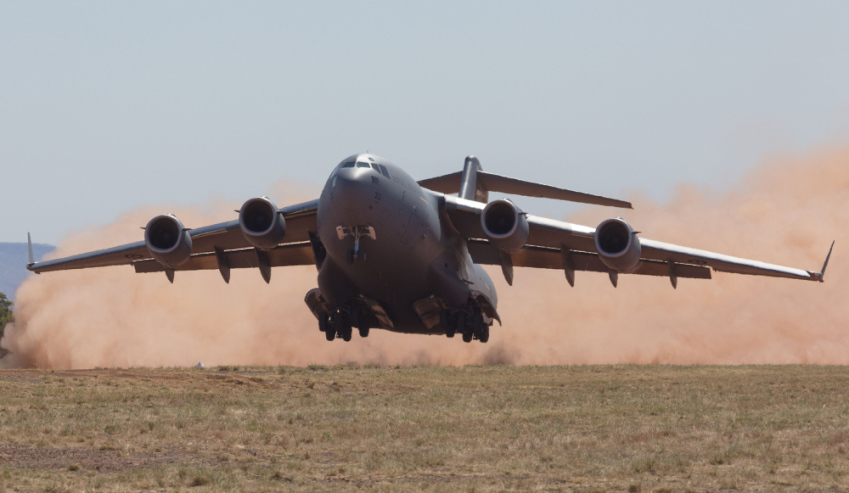A RAAF C-17A Globemaster has delivered five emergency service vehicles to WA to support communities affected by tropical cyclone Seroja.
The aircraft, operated by No. 36 Squadron, flew the cargo from Melbourne to Geraldton on 19 April.
So far, the cyclone has destroyed or completely damaged 170 residential properties and businesses, while a further 491 have received more moderate damage.
The Globemaster’s help follows RAAF also shifting a C-130J Hercules from RAAF Base Richmond to RAAF Base Pearce in WA.
It’s been moving personnel and supplies including food, water and generators, and can also move casualties back to civilian hospitals for treatment if needed.
Commander Air Mobility Group Air Commodore Carl Newman said airlift support enabled emergency services to respond more flexibly.
“It’s 350 kilometres from RAAF Base Pearce to Geraldton, which is a four-hour drive or a 45-minute flight,” AIRCDRE Newman said.
“Having a Hercules available to assist recovery efforts means emergency services can conduct multiple flights from multiple airfields to the disaster area in a single day.
“The full extent of destruction following a cyclone is also not immediately apparent, and airlift allows a responsive option to deliver personnel and equipment in the days that follow.”
Flight Lieutenant Kyle Hornberg, a pilot with No. 37 Squadron who led the Hercules crew, said, “We were very happy to be ‘on station’ in Western Australia within a day of the request being received and able to support most contingencies for this task.
“Our squadron is often at its best when it’s supporting humanitarian assistance and disaster relief operations, or on Defence assistance to the civil community tasks.”
The Boeing C-17A Globemaster III is a four-engine heavy transport aircraft that can accommodate huge payloads and land on runways just one-kilometre long.
That flexibility comes from its design, which mixes both high-lift wings and controls requiring just three onboard (pilot, co-pilot and loadmaster).
Cargo is loaded onto the C-17 through a ramp system at the back, while its floor has rollers that flip from flat to handle wheeled vehicles or pallets. RAAF owns eight, all operated by No. 36 Squadron and based at RAAF Base Amberley.
Meanwhile, the C-130J Super Hercules is a medium-sized tactical air-lifter that can carry 128 passengers or eight pallets of cargo. It can work alongside other airlifters, too, such as the C-27J Spartan and C-17A Globemaster III.
In September 1999, it helped evacuate 2,500 people from Dili, as conflict in East Timor raged.
A fleet of 12 are operated from RAAF Base Richmond by No. 37 Squadron, and were delivered between 1999 and 2001, but its lineage goes back far further.
The RAAF received its initial batch of the original incarnation of the Hercules back in December 1958, becoming the first nation to operate the aircraft outside of the US Air Force.
It marked 800,000 flying hours by its fleet with a formation flight of three over Sydney Harbour in 2014.
[Related: RAAF delivers vehicles to Antarctica ahead of Operation]









